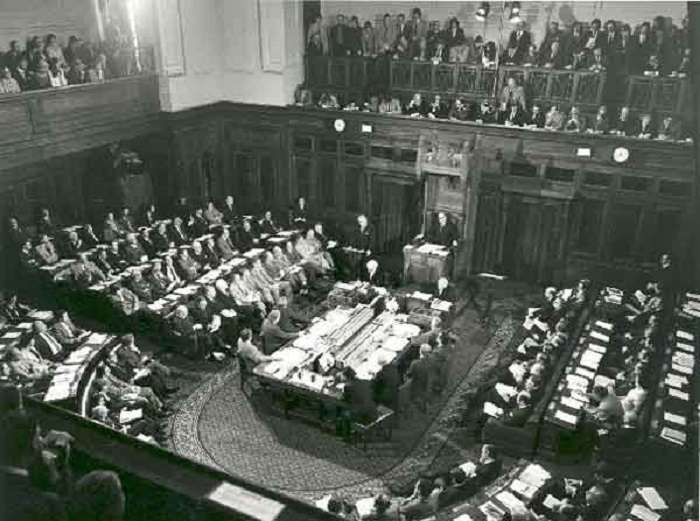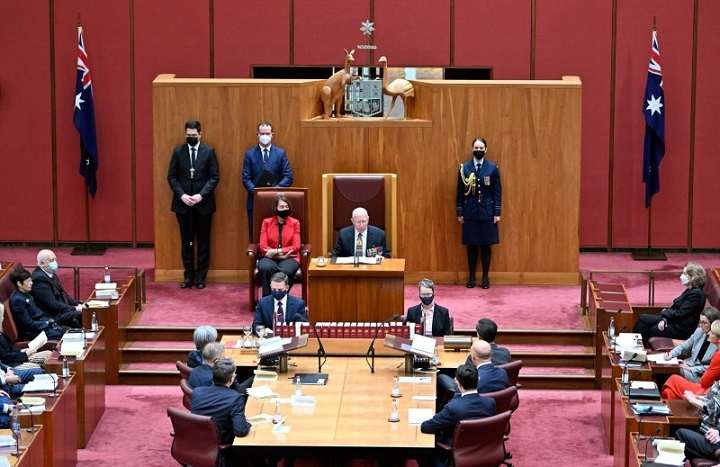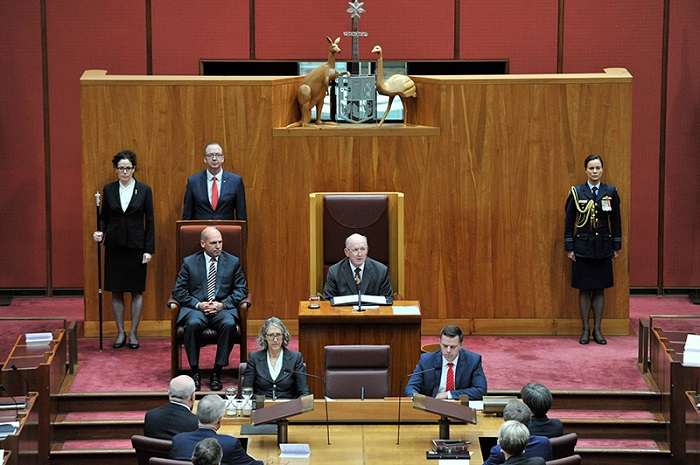Table of Contents
ToggleOverview of the Australian Senate

The Australian Senate is part of the federal parliament’s bicameral system, complementing the House of Representatives. While the House of Representatives represents electorates based on population, the Senate represents states and territories, giving equal weight to each, regardless of population size. This structure ensures that smaller states like Tasmania have the same representation as larger ones like New South Wales, ensuring a balance in legislative influence.
Each senator serves a six-year term, and elections are staggered to maintain continuity. The Senate’s primary role is to review, debate, and approve legislation passed by the House of Representatives. It also serves as a forum for states’ interests and provides oversight of government activities.
The Senate’s complex structure requires strong leadership to coordinate government business and ensure legislative priorities are met. This is where the “Leader of the Government in the Senate” plays a crucial role.
The Role of the Leader of the Government in the Senate
The Leader of the Government in the Senate is a senior figure within the government, responsible for representing the government’s interests in the Senate. Their primary duty is to manage the government’s legislative agenda and ensure its passage through the upper house.
Key Responsibilities
- Managing Government Business
The Leader oversees the scheduling of government business in the Senate, determining the order in which bills and motions are debated. They negotiate with the opposition and crossbenchers to facilitate the smooth passage of legislation. This requires a high level of political acumen, negotiation skills, and an in-depth understanding of parliamentary procedures. - Representing the Government’s Position
In Senate debates, the Leader of the Government presents and defends the government’s policies, providing explanations, answering questions, and addressing criticisms. They are responsible for articulating the government’s stance on key issues and ensuring that the government’s legislative priorities are well represented in discussions. - Liaising with the Prime Minister and Cabinet
The Leader of the Government in the Senate works closely with the Prime Minister, the Cabinet, and other key government officials to ensure that the government’s priorities are reflected in the Senate. They are a critical link between the Senate and the executive branch of government, ensuring that the government’s broader political strategies are aligned with Senate proceedings. - Negotiating with Crossbenchers and Minor Parties
Since the government often does not have a majority in the Senate, the Leader must negotiate with minor parties and independent senators to secure support for government legislation. This requires careful compromise and coalition-building, ensuring that the government can pass important laws even without a clear Senate majority. - Maintaining Discipline Within the Senate
The Leader is also responsible for maintaining party discipline within the Senate, ensuring that government senators vote in line with the party’s policies. They may need to manage internal dissent, ensuring a unified front during critical votes. - Acting as a Senior Government Spokesperson
In addition to their legislative duties, the Leader often acts as a senior government spokesperson, especially when the Prime Minister or other senior ministers are not available. They participate in media briefings, public debates, and other forms of communication to explain government policy and actions.
Historical Significance of the Role
The position of Leader of the Government in the Senate has been essential to Australia’s political history since the establishment of the Senate in 1901. Over the decades, the role has evolved in response to changes in the political landscape, but its core functions have remained the same: managing government business, securing legislative support, and representing the government in the Senate.
Notable individuals who have held this role include:
- John Gorton (Liberal Party): Gorton later became Prime Minister and was known for his pragmatic and sometimes unconventional approach to leadership.
- Gareth Evans (Australian Labor Party): Evans was an influential figure in Australian foreign policy and held a commanding presence in the Senate.
- Mathias Cormann (Liberal Party): Serving as Leader from 2017 to 2020, Cormann was a key player during the turbulent period of leadership changes within the Liberal Party and oversaw significant economic reforms.
These leaders have shaped the political discourse of their time, making the role pivotal not only to the functioning of the Senate but to broader national politics.
Challenges Faced by the Leader of the Government in the Senate
While the position carries significant influence, it is not without its challenges. The Leader of the Government in the Senate must navigate a variety of political hurdles, including:
1. Lack of a Majority
The government rarely holds a majority in the Senate, making negotiation with crossbenchers and minor parties essential. This can lead to significant challenges in passing legislation, as compromises may need to be made, diluting the government’s original policy proposals. Balancing the need for support with maintaining the integrity of government policies is one of the most difficult tasks for the Leader.
2. Opposition Scrutiny
The Senate is often referred to as the “House of Review,” and it plays a key role in scrutinizing government legislation. The opposition, along with minor parties and independents, often use Senate debates to challenge government policies. The Leader of the Government in the Senate must be prepared to defend government decisions under intense scrutiny, answering difficult questions and addressing pointed criticisms.
3. Internal Party Dynamics
Maintaining unity within the government’s Senate ranks is also a challenge. Senators may have divergent views on certain policies, particularly if they come from different states or represent specific regional interests. The Leader must ensure that internal disagreements do not spill over into public dissent or undermine the government’s legislative agenda.
4. Public Perception
As a public figure, the Leader of the Government in the Senate is subject to media scrutiny and public opinion. They must balance their legislative duties with their role as a spokesperson for the government, ensuring that they communicate effectively with the public and manage their public image carefully.
The Current Leader of the Government in the Senate
As of 2024, Penny Wong serves as the Leader of the Government in the Senate, representing the Australian Labor Party. Wong is a seasoned political figure known for her sharp debating skills, strong grasp of policy, and experience in international relations. She has been a central figure in the Senate since her election in 2002 and has held various senior positions, including Minister for Foreign Affairs.
Wong’s leadership style is characterized by her ability to manage complex negotiations and navigate the often fractious nature of Senate politics. She has been instrumental in shaping the Labor government’s legislative agenda, particularly in areas such as climate policy, economic reform, and social justice.
The Importance of the Role in Australian Governance
The Leader of the Government in the Senate plays a critical role in ensuring that the Senate functions effectively and that the government’s legislative agenda is advanced. Without strong leadership in the Senate, government business could stall, leading to delays in passing critical legislation.
The Senate’s role as a house of review means that it often serves as a forum for more detailed scrutiny of government policy than the House of Representatives. This scrutiny can lead to amendments or even rejection of government bills, which makes the Leader’s role all the more important. They must be adept at negotiating compromises and ensuring that the government’s key priorities are not lost in the legislative process.
Moreover, the position ensures that the Senate remains a key part of Australia’s democratic process, acting as a check on the power of the executive while still facilitating the passage of necessary laws.
Related Post:
Closing Part of a Song: An In-Depth Exploration
Give a Little Extra Flair with Up: Elevating Your Style and Space
The Ultimate Guide to McDonald’s $12 Dinner Box: A Delicious and Affordable Feast
The Leader of the Government in the Australian Senate is a pivotal figure in the nation’s political landscape. They are responsible for managing government business, negotiating with crossbenchers, defending government policies, and maintaining party unity. The challenges they face are significant, but the role remains essential to the functioning of Australia’s parliamentary democracy.
Whether through negotiating complex legislative deals or defending government policies under intense scrutiny, the Leader of the Government in the Senate ensures that the government’s legislative priorities are achieved while maintaining the balance and integrity of the Senate’s function.



